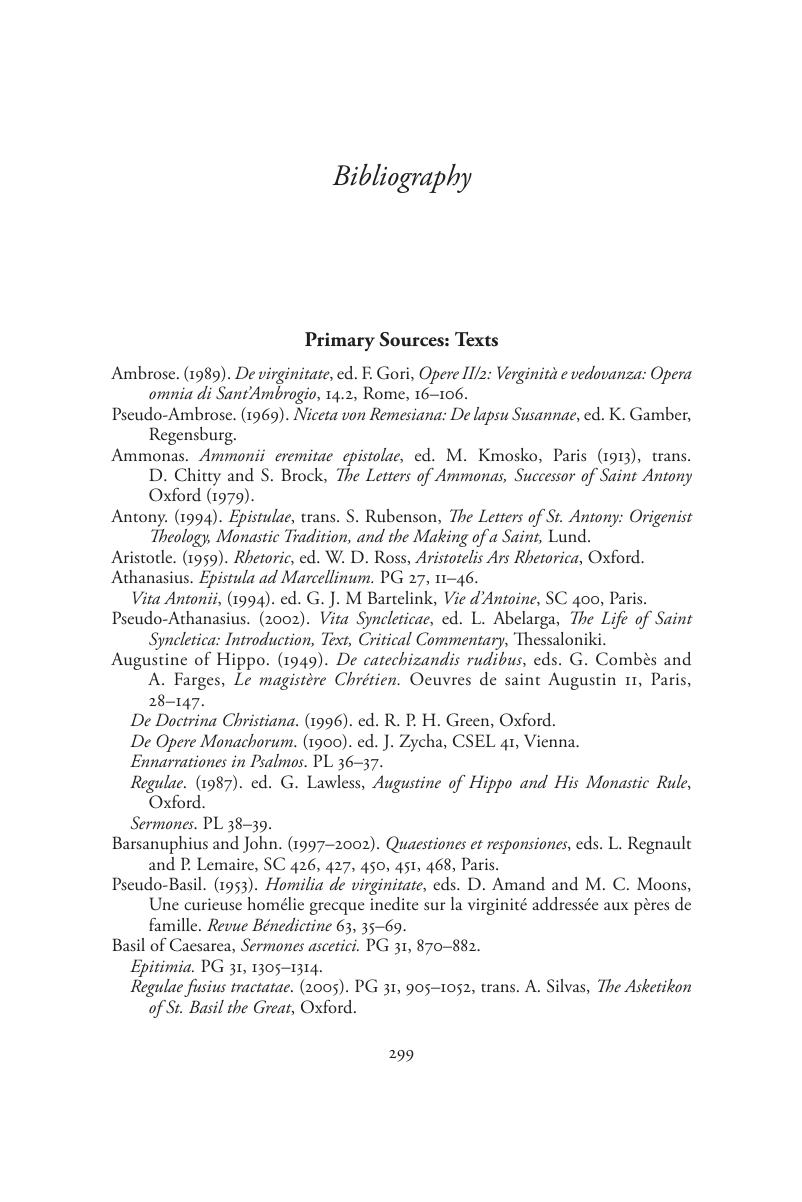Book contents
- Monasteries and the Care of Souls in Late Antique Christianity
- Monasteries and the Care of Souls in Late Antique Christianity
- Copyright page
- Dedication
- Contents
- Acknowledgments
- Abbreviations
- Introduction
- Part I Evaluating Postulants
- Part II Cognitive Disciplines
- Part III Collective Heart-Work
- Bibliography
- Index Locorum
- Subject Index
- References
Bibliography
Published online by Cambridge University Press: 30 August 2017
- Monasteries and the Care of Souls in Late Antique Christianity
- Monasteries and the Care of Souls in Late Antique Christianity
- Copyright page
- Dedication
- Contents
- Acknowledgments
- Abbreviations
- Introduction
- Part I Evaluating Postulants
- Part II Cognitive Disciplines
- Part III Collective Heart-Work
- Bibliography
- Index Locorum
- Subject Index
- References
Summary

- Type
- Chapter
- Information
- Monasteries and the Care of Souls in Late Antique ChristianityCognition and Discipline, pp. 299 - 328Publisher: Cambridge University PressPrint publication year: 2017



